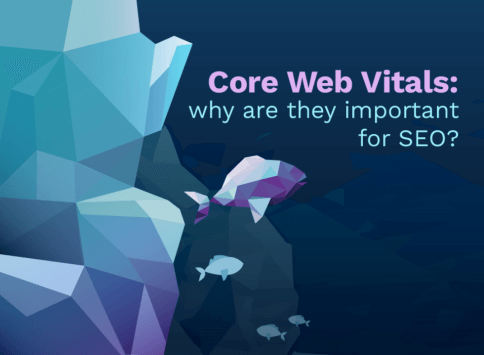Core Web Vitals: why are they important for SEO?
Core Web Vitals are related to the loading of a web site, so they are consequently fundamental for the User Experience.

Google Core Web Vitals
When we talk about On-Page SEO, we are referring to all those procedures implemented in order to improve the technical parameters of the pages of a website.
These include correct content distribution, multimedia optimization and speed.
It is precisely this last area that contains some of the most important parameters for a good SEO score; in particular, over the last year Google has given increasing importance to three specific speed parameters:
- First Input Delay (FID)
- Largest Contentful Paint (LCP)
- Cumulative Layout Shift (CLS)
These three parameters are called, precisely because of their fundamental importance, Core Web Vitals.
Core Web Vitals, being parameters related to the speed of a site, are consequently fundamental for the User Experience: Google, in fact, is increasingly enhancing its search engine to provide users with results that are not only consistent with the search query, but which are also and above all “pleasant” and easy to navigate.
First Input Delay (FID)
The First Input Delay (FID) is a parameter that measures the time between the user's first interaction with a page on the website and the moment when the browser responds to the input (an example of input could be the click on a link).
In other words, it measures the time it takes for the browser to respond to user input as they navigate the web page.
The ideal time required by Google to obtain a good score is between 0 and 100 milliseconds. From 100 up to 300 there is a need for improvement, while above 300 milliseconds the parameter is negative.
Largest Contentful Paint (LCP)
The Largest Contentful Paint (LCP) is a parameter that concerns the loading speed of a web page: it focuses in particular on the rendering time of the largest element in kibibytes (Kb) of the viewport.
Obviously, the shorter the time, the higher the score given to the page by Google.
As far as reference times are concerned, we can say that:
- 0 to 2.5 seconds is a good time;
- 2.5 to 4 seconds is a time to improve;
- above 4 seconds is a bad time.
It is therefore important to keep an eye on all those elements that appear at the beginning of the web page: in particular, it is good to focus on the loading speed of multimedia elements, such as images or videos.
Cumulative Layout Shift (CLS)
Finally, the Cumulative Layout Shift is a parameter focused on the layout of the web page: in particular, it concerns that layout shift event that occurs suddenly during the loading of the page itself, making the user experience terrible.
This event can be annoying if, for example, a button is about to be clicked and the layout suddenly shifts, causing the user to click the blank space or even another button nearby.
While First Input Delay and Largest Contentful Paint are time units, Cumulative Layout Shift can be measured in terms of space according to a specific score devised by Google:
- 0 to 0.1 is a good score;
- 0.1 to 0.25 is a score for improvement;
- above 0.25 the score is negative.
Core Web Vitals Test
Core Web Vitals can easily be analyzed to improve the ranking of the pages of your own website, in conjunction with the other speed parameters.
There are various tools on the web made by Google, such as Google Search Console, Page Speed Insights, Lighthouse and Chrome Web Tools.
Another free tool that can provide specific information on both Core Web Vitals and all other important parameters for On-Page SEO is the SEO Audit by SeoChecker.
With the SEO Audit, you will be able to view a timeline with frames of your site's loading, together with detailed tabs for each parameter.
Core Web Vitals SEO
After having explained what Core Web Vitals are and what they influence, we definitely have a clearer picture of why they are crucial for Search Engine Optimisation (SEO).
In addition to being a crucial node for User Experience (and this is already a determining factor for scoring), they can be decisive in establishing ranking positions when comparing two websites with similar values.
“We believe user engagement will improve as experiences on the web get better — and that by incorporating these new signals into Search, we'll help make the web better for everyone”.